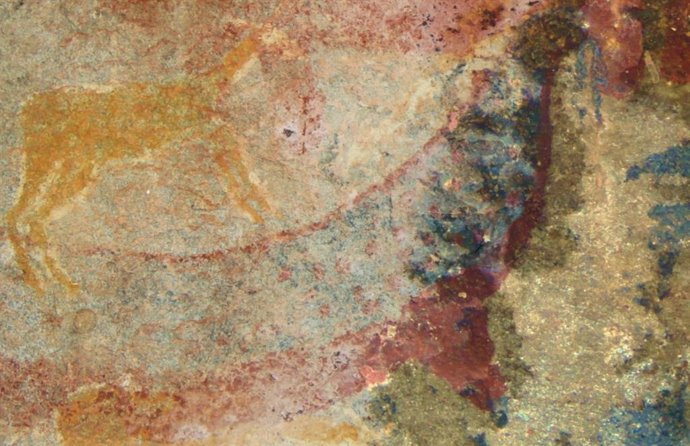Painting of the dicynodont made by the San in the early 19th century -JULIEN BENOIT
September 19 () –
A mysterious animal with fangs depicted in South African rock art may represent an ancient species preserved as a fossil in the same region.
This is the conclusion of a study published in the journal PLOS ONE by Julien Benoit from the University of Witwatersrand, Johannesburg, South Africa.
The panel of the Horned Snake is a section of rock wall featuring artwork of animals and other cultural elements associated with the San people of South Africa, originally painted between 1821 and 1835. Among the painted figures is a long-bodied animal with downward-facing tusks does not match any modern species known in the area.
Since the San people are known to have included various aspects of their environment in art, including fossils, Benoit suggests that The fanged creature may have been inspired by an extinct species.
COMPARABLE WITH DICYNODON FOSSILS
South Africa’s Karoo Basin is famous for its abundant, well-preserved fossils, including tusked animals called dicynodontswhich are often found eroding from the ground. Benoit reviewed the Horned Serpent panel and found that the fanged figure was comparable to dicynodont fossils, an interpretation that is also supported by San myths about large animals that once roamed the region but are now extinct.
If the tusked figure is indeed an artist’s rendition of a dicynodont, a species that became extinct before the dinosaurs appeared and was already extinct when humans appeared in Africa, It would predate the first scientific description of these ancient animals by at least 10 years.
There is archaeological evidence that the San people may have collected fossils and incorporated them into their artwork, but the extent of indigenous knowledge of palaeontology is little known across Africa.
Further research into indigenous cultures could shed more light on how humans around the world have incorporated fossils into their culture.
Julien Benoit adds: “The painting was made no later than 1835, which means that this dicynodont was depicted at least ten years before the Western scientific discovery and naming of the first dicynodont by Richard Owen in 1845. This work supports [el hecho] that the first inhabitants of southern Africa, the San hunter-gatherers, They discovered fossils, interpreted them and integrated them into their rock art and belief system.”










![[Img #74131]](https://thelatestnews.world/wp-content/uploads/2024/10/They-discover-the-origin-of-most-meteorites-300x200.jpg)

Add Comment